Note on The Swine Republic:
The book The Swine Republic has been chosen by the Library of Congress’ Center of the Book to be one of 56 books included in the “Great Reads from Great Places” list for the 2024 National Book Festival.
Thank you if you read and/or bought the book; obviously it would not have received this distinction without your readership.
The Center for the Book (www.read.gov/cfb) in the Library of Congress in Washington, DC, works with its 56 Affiliate Centers for the Book (the 50 states, the District of Columbia, Puerto Rico, the U.S. Virgin Islands, American Samoa, Guam and Northern Marianas) to fulfill the Center’s mission of promoting books, reading, libraries and literacy nationwide. The Center also promotes our nation’s diverse literary heritage.
Every year, each of the Affiliate Centers for the Book chooses a book that in some way represents its state’s or territory’s literary heritage: Perhaps the author was born or lives there, the book is set in a particular state or territory, or there is some other connection. Each year, the heads of the Affiliate Centers come to Washington for the National Book Festival and participate in the Roadmap to Reading, a giant space at the Washington Convention Center where each state and territory has a table featuring the “Great Reads” books and other information and takeaways. Last year, thousands of book lovers visited the tables of the Affiliates and learned about the books on the Great Reads list. The Swine Republic will be part of this year’s list, and this list will live indefinitely at the website (www.read.gov/greatreads/). The book will also be sold at the festival.
This year’s National Book Festival is Saturday, Aug. 24. https://www.loc.gov/bookfest/.
Over the span of my life, I reckon that I have cleaned at least 5000 caught fish and probably eaten about half of those, so, in the interest of ‘writing what you know’, here goes.
Note: all images attributed to Iowa DNR.
Best 5 Iowa fish species for eating quality:
1a. Bluegill. Probably one of the safest fish to eat in terms of environmental contaminants, bluegills also have firm flesh and a mild flavor. They are not the easiest fish to filet until you’ve done about 10 of them, then you can practically do it in your sleep. Bluegills are also very tasty when dressed and prepared the old-fashioned way—scaled with the head, fins and entrails removed. In fact, the latter is probably the civilized way to eat them because the fish’s skeleton slows you down, preventing the dinner table acrimony that results when people desperately lunge for the last few filets. Cooking them whole also obstructs the lousy skillet-hoverers who intercept about 1/3 to ½ of the filets traveling from skillet to serving plate. You can’t just pop a whole bluegill (with bones) into your mouth like you can a filet. Bluegills should be either pan or deep fried with a very light and lightly seasoned breading. All-purpose flour with salt and pepper is plenty. Maybe substitute some celery or garlic salt if your palate has been fried by too many jalapeno poppers. Bluegill are ubiquitous in Iowa.
1b. Yellow Perch. There are not a lot of places in Iowa to catch nize-sized yellow perch, but the Iowa Great Lakes (especially Spirit Lake) and the Mississippi River are two. Perch are basically a miniature walleye with a milder flavor. A 10” perch is about as good as it gets in freshwater for eating. Yellow perch probably live in every lake in Minnesota, but only the very large lakes seem to have keeper sized individuals, and overall, that state’s perch populations seem to be diminishing for reasons that aren’t clear.
3. Northern Pike. Yes, I am elevating the northern above walleye. Legend has it that the old Native American fishing guides in Canada claimed northerns were the only fish you could stand to eat every day. Their flesh is very firm and mild and they can be dressed and prepared any multitude of ways. There are two big problems with northern pike. One, they are quite bony (as you might predict for a fish of that shape), and two, they are very slimy, and for those two reasons, some anglers don’t like messing with them. I once saw a guy bring a 40”+ northern to the boat in Canada, and just prior to the instant it could be netted, the boat owner separated fish from fisherman by burning his line with a lit end of a cigar. He didn’t want northern slime in his new boat.
Northern pike is one of a few fish whose table qualities do not diminish much with increased size. As a consequence, a lot of very large individuals were harvested in US lakes and rivers over the last century, and this has upset the natural size distribution and left some lakes with numerous very small sized individuals derided as ‘hammer handles’ by anglers.
Although they are the mostly widely dispersed freshwater fish on earth (circumpolar above 40o N latititude), the Iowa Great Lakes, the Mississippi River and a handful of the larger interior rivers are some of the few places you can catch the species in Iowa.
4. Walleye/Sauger: About everyone has heard of walleye; the sauger is a very similar (but smaller) fish occupying mainly large rivers, whereas walleye also inhabit many Iowa lakes. I’ve known many people that worship at the Altar of Walleye and think Jesus passed out loaves and walleyes, the presumption being there is no other fish worth eating. I’m not one of them. Don’t get me wrong, they’re good, but it’s not worth pursuing them all day (or all night) long when the bite is slow, as many are apt to do. I’m convinced anglers love them in no small part because they are the easiest fish to filet. Just about anybody could do it after watching one fish get fileted. Like northern, they are good prepared in any number of ways. Their flesh is mild and flaky, but I’ve found their taste can vary some from fish to fish and water body to water body. I sense that the flaking character appeals to many because it is reminiscent of cod. The very last thing you want close to a walleye filet is an aspirational chef who found a recipe on Instagram for walleye marinated in the juices of a three-day ripe guava and then encrusted in finely-chopped Himalayan hickory nuts before frying in oil of oregano. No no no. Light and lightly seasoned breading fried in peanut oil.
5. Crappie. There are more than a few that would put crappie #1, but I’ve got four ahead of it because their flesh can be soft and in warm weather, crumbly. A large crappie filet (from a fish > 10” long) looks beautiful fried and on a plate, but side-by-side with a bluegill, the crappie will finish second every time. A nice crappie filet is your best bet for a fish sandwich. I love catching crappie in the half hours that bookend summer doldrum sunsets as the evening shift draws to a close at the Cicadia Lumber Company.

Others:
Channel catfish. I can safely say that the channel cat was more highly regarded as table fare 50 years ago than today. I have a theory on this that I will discuss later. Anecdotally, it’s my experience older people and men seem to like them better than youngsters and women. They have a stronger flavor than my top 5, but I think they are very good if you consider the following. First, they must be fried, and fried ‘harder’ than a mild, flaky fish. Second, the breading should be light but well-seasoned. Channel cat flesh seems to be watery, and thick, heavy fry coating traps that water, which I think strengthens the strong taste some find to be too much. Third, while the traditional way of cleaning catfish is to skin them followed by head, fin and gut removal, I think they should be fileted. This allows you to fry them hard, hot and fast while getting them crispy without burning. Finally, soaking channel cat filets 12-24 hours in whole milk or buttermilk works wonders on removing strong flavors. I kid you not, it really works miracles. I limit my eaters to under 20” in size; 15” is probably ideal. Catchable size channel cat exist in almost every Iowa water body big enough to float a bobber.
White bass. A lot of anglers mistakenly call these ‘stripers’, although they are closely related to the ocean striped bass and hybrids are stocked in Iowa waters. The white bass is absolutely the best fish on earth for fish tacos, which I love. It has a stronger flavor (that won’t get lost in a taco) than the top five but is firm and flaky and fries up similarly to crappie. Some people advise removing the ‘red line’ or red flesh in the filet; I don’t mess around with that because it doesn’t do anything a milk soak can’t do.
Large- and smallmouth bass. An angler culture developed in the ‘60s and ‘70s that emphasized only catch and release for these species. A lot of this came out of the emerging professional tournament fishing circuit that focused on bass fishing. These two species, especially largemouth, are ones that state fisheries agencies tend to manage very aggressively. Both species can be ‘fished down’ and when that happens, the fishing for bluegill and crappie tends to diminish toward smaller size structures. A water body with big healthy bluegill usually contains big healthy bass.
I think most people would find both species excellent table fare. I see nothing wrong with keeping and eating a modestly-sized largemouth bass from a healthy lake from time to time. I likely would not eat a smallmouth bass from Iowa waters because, along with the brook trout, they are environmental indicators and I think their status as an iconic, pre-settlement totem species should be respected. Our mid-size interior rivers flowing east to the Mississippi are classic smallmouth habitat and they likely thrived here at one time like nowhere else. I have eaten a lot of them in the Boundary Waters of Minnesota, where they are an invasive species, and they are quite good to eat. Bass are one of the best fish for baking.
Sheepshead. Also known as the freshwater drum, the sheepshead is hands down our most underrated fish when it comes to eating quality. A fair number of people along the Upper Mississippi, mainly older folks, still recognize the sheepshead as fine table fare. I rarely see anyone apart from immigrant populations keep one for eating from an interior water. The fish are not bony and are at least as good as channel cat or white bass after the milk soak. Don’t believe what you hear about cutting out the red meat—it’s not needed. Sheepshead are very abundant and easy to catch in the Mississippi, where they provide a great ecological service by eating invasive zebra mussels. Monstrous individuals of more than 20 pounds were once caught out of the Mississippi and elsewhere, but most of the ones caught now are 1-2 lbs. Aside: a youngster I know in Wisconsin proudly told me that his recently deceased granddad “had nothing in his tackle box except hooks and sinkers, and the only thing he fished for was sheepshead.”
Redhorse Sucker. #2 in the underrated department is the Redhorse. There are several species present in Iowa, I believe the one I’ve caught most often is the Shorthead, or Northern Redhorse. It’s one of our most beautiful fish and is abundant in clean water, especially in the Upper Mississippi and our better eastern Iowa rivers like the Wapsi and Maquoketa. Redhorse have mild and flaky flesh but are almost hopelessly bony if you don’t know what you’re doing. I have fileted them like a walleye, boiled the still bony filets, and then chopped them finely to make fish cakes which were excellent. This is a good wintertime activity and I like to save sheepshead and channel cat in the freezer and then mix them both with redhorse for fish cakes.
Flathead catfish. I haven’t eaten many, but they are the closest thing to a saltwater fish like halibut that I know of. The flesh is very firm and very nearly gives you the sensation you’re eating steak or a pork chop. They are much milder in flavor than a channel cat and many claim they get better as they get bigger—which is really big, 50 lbs or more.
Common carp. I consider my tastes to be broad and forgiving, but I just don’t like common carp. Many people around the world do indeed like them enough for them to achieve delicacy status, but the flavor is just too strong for me. I’d probably be likely to give them another try if a modest sized one found its way into my boat. I’ve had smoked carp and it’s fine, but it ought only to be eaten after three beers in a roadhouse located at some desolate southwest Wisconsin crossroads, where it was smoked by some guy permanently clad in Key overalls named Wendell. In my opinion.
Buffalo. There are two species (smallmouth and bigmouth). Both are native to Iowa and both are often confused with the common carp, which has very likely caused both, especially the smallmouth, to decline in numbers and size. You can find a few river rats around that think buffalo fish are good to eat, but I have not been able to prepare them in a way that made me want to eat them again. Where are the aspiring chefs, I ask, when you bring in a buffalo fish? Hmm? When I see a person catch and keep one, I’m always tempted to ask how they prepare them, but haven’t.
Bullhead. There are three species, but the most often caught for sport and eating is the yellow bullhead (the other two are black and brown). It’s another fish that has gone out of favor with the masses but was almost a springtime staple for many back in the day. So very many folks who grew up in small town Iowa must remember their parents or grandparents frying bullheads. Grocery stores even carried bullhead that had been commercially caught in Minnesota lakes. These small members of the catfish family have a very dark red but mildly flavored flesh. They should not be fileted but skinned and gutted. The fins are edible after frying and some people like them, especially the tail. I have fond memories of fishing for bullheads with my uncle and cousin, and some of the most delicious fish I’ve ever eaten were fresh bullheads fried up by my aunt. I don’t have the time to fish for them much these days, but hopefully someday I will stumble into some.
Trout. I do not think Brown Trout are great to eat and their value as a sport fish so vastly exceeds their value at the table, that I would never keep one, although I have eaten them in Montana. Wild rainbow trout, on the other hand, are good to eat in my opinion, and some 3-pound rainbows caught ice fishing from a Montana reservoir are some of the best fish I’ve ever eaten, period. Rainbow trout fresh out of the hatchery are about as good as brown trout, which is to say, not very good. I previously commented that I would not eat brook trout in Iowa, but I have eaten them in Montana where they are invasive, and they were quite bold and tasty.
Knives. A working theory of mine is that the widespread distribution of the Normark-RapalaTM filet knives from Finland in the 1960s changed the way people kept and ate fish in the Midwest. The sharp, thin, and flexible blade introduced fileting to many fishermen, I am sure. Prior to that, most fish were scaled and/or skinned and then the heads, guts and fins removed, leaving the inner skeleton intact for cooking. A spoon for scaling and a butcher knife and skinning pliers for the rest were the tools of that trade.
I believe that many channel cat and bullhead were displaced in preference by tasty bluegill and crappie once fishermen learned how to slice away those delicious and easy-to-cook filets with the Rapala knife. I don’t know how many of those old wooden handle knives Rapala has sold, but it’s easily in the many millions. I’ve probably had 10 of them in my life.

The Rapala knives are affordable (<$20) and good to be sure, but I find that once they need sharpening, it’s all downhill from there. They can be sharpened but I don’t think they maintain that sharpness very long after they’ve lost the initial out-of-the-package edge. Nonetheless, you can clean 1000 fish with one before you’d need a new one. The small 4” Rapala knife seems almost as if it was invented just to clean perch.
Normark has recently come out with a new type of blade that is advertised to be more flexible. At $30 they are about double the price of their original knife. I bought one and found it to be no better, really. I bought an Ozark Trail brand filet knife for $15 at a Walmart after forgetting my knives at home, and this has turned out to be the best filet knife I’ve ever owned. The blade is flexible and holds onto an edge longer than Chuck Grassley and his senate paycheck.
There are some really expensive filet knives being marketed to fishermen these days, $100 and up. I see these as parallel to the Yeti brand coolers, something maybe marginally better at three times the cost. I’m curious about the Bubba brand folding filet knife, but I haven’t bought one yet. Years ago I bought a Buck brand filet knife. It was about double the price of a Rapala knife but I ended up hating it. Buck is a very good brand for hunting knives, but their steel on a filet knife was way too stiff and impossible to sharpen. Also, I like the handle on a filet knife to be narrow in the same dimension as the blade, and the Buck’s handle just wasn’t right.
Finally, the electric and rechargeable knives. Someone bought me the Rapala rechargeable model several years ago as a gift, and based only on this one device, I have some mixed feelings about them. Firstly, these things are great if you have arthritic hand pain, because fish cleaning can require some hand and wrist strength. Instinctively you might think they would be slicker than a wet minnow on a November morning for cleaning a large batch of fish, but the battery on mine was only good for about 20 fish or so, and it got very hot toward the end. After about five years, the battery would no longer hold a charge good for more than five fish, at best. I poked around the internet and wouldn’t you know, the replacement battery was no longer available. (I can imagine Janne Marttiini telling me that it served me right.) You should not filet fish with one of these until you are accomplished with a regular filet knife, unless you want your dinner guests to say “hey, nice perch” when they look at your walleye filets.
Cooking.
For best flavor, most types of fish should be fried in my opinion. I almost always deep fry now with peanut oil. I think deep fried fish are less oily than pan/skillet fried. This can get expensive with peanut oil, if you don’t filter and reuse the oil, which I do.
For mild tasting and small filets like bluegill and perch, a dip in evaporated milk and then flour seasoned with salt and pepper is all you need.
The larger the fish, the more important it is that it be crispy, if it’s fried, that is. For a thick filet like a walleye or large crappie, I dust it in flour lightly seasoned with salt and pepper, then dip in evaporated milk, and then in Panko (walleye) or corn meal (crappie). HyVee carries a brand of Italian bread crumbs that are perfect for this.
Many people I know like the store-bought seasoning and coating mixes—Andy’s, Shore Lunch, Lou-ana and others. These breadings seem to stick well to the filet without an egg or milk wash, and for that reason they are really convenient. I like Andy’s brand for channel cat, sheepshead and white bass.
I don’t especially like liquid batter preparations, like the infamous beer battered-fish. The pastry-effect that results diminishes the natural flavor of the fish for me.
Always put fish in hot grease AND...DO…NOT…CROWD…THE…PAN.

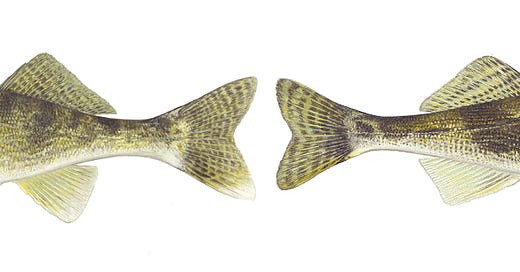


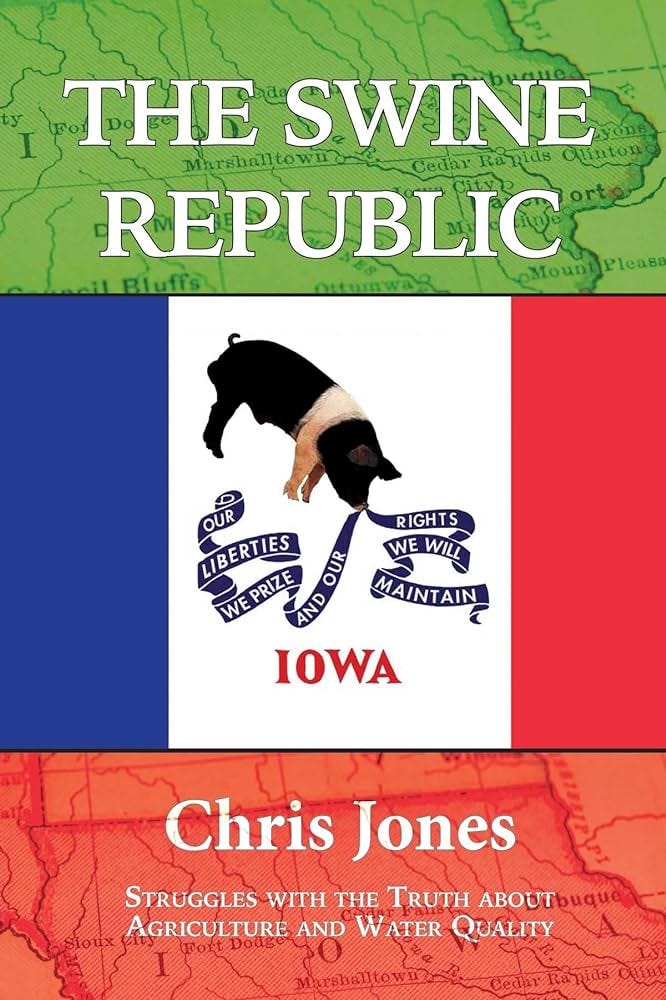



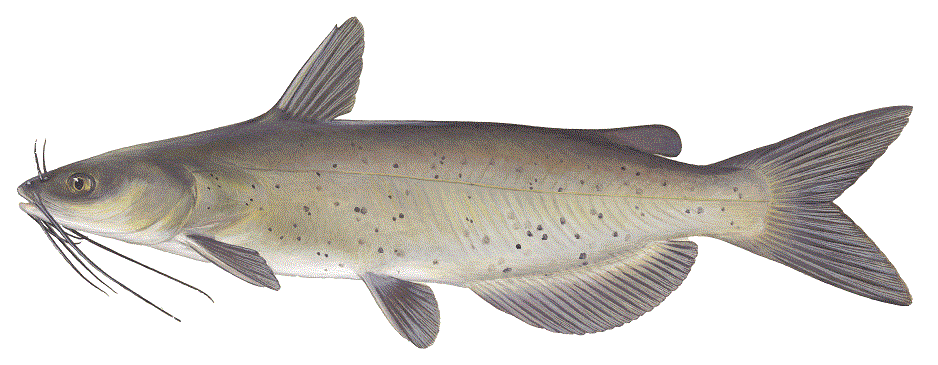
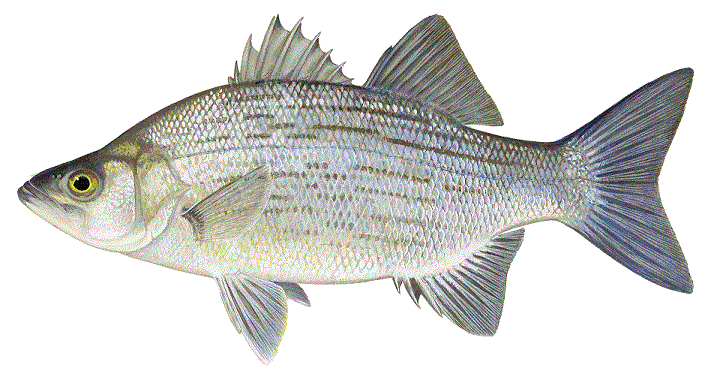

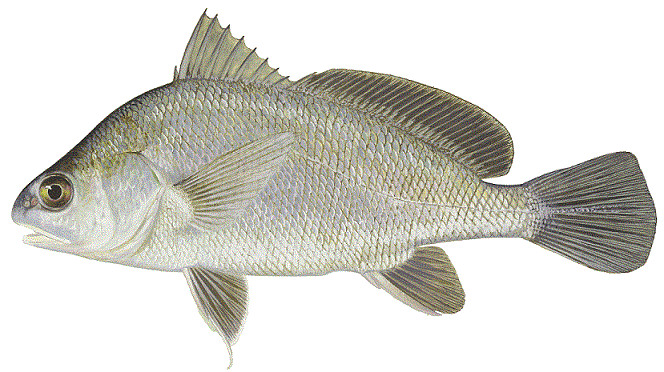
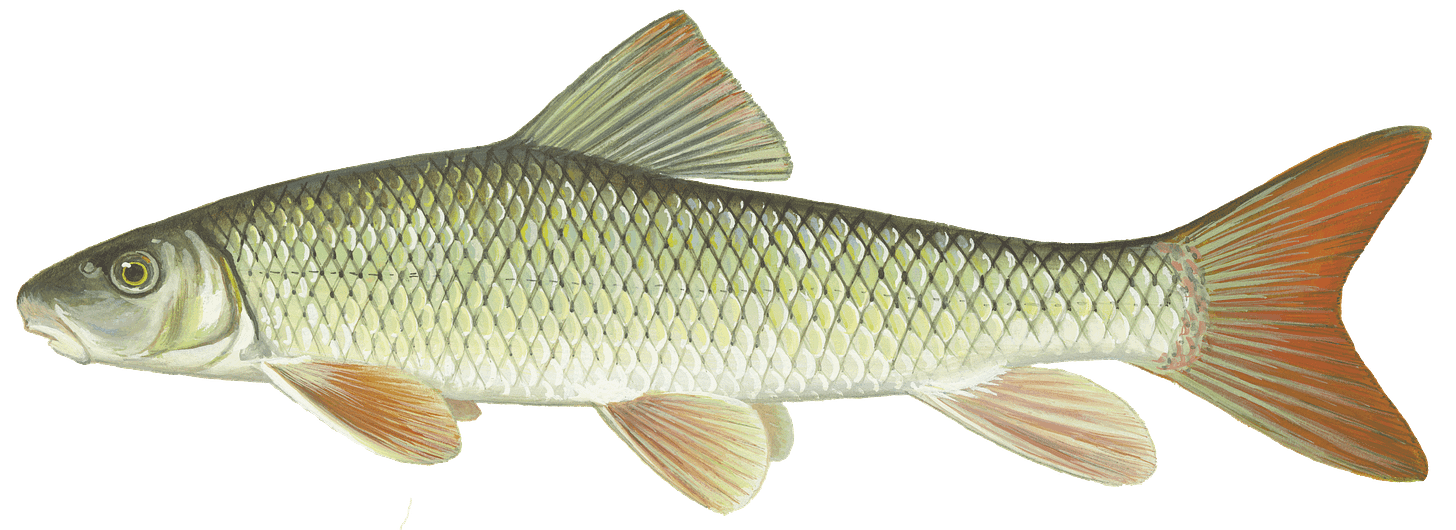
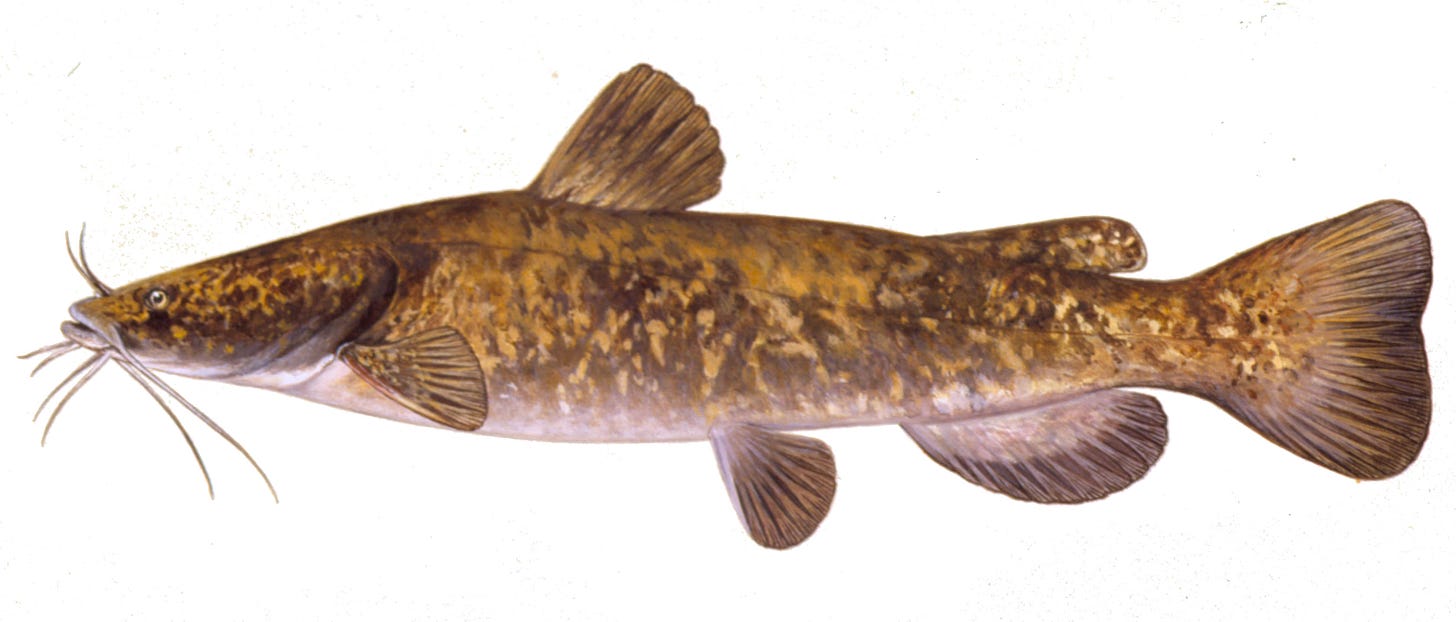
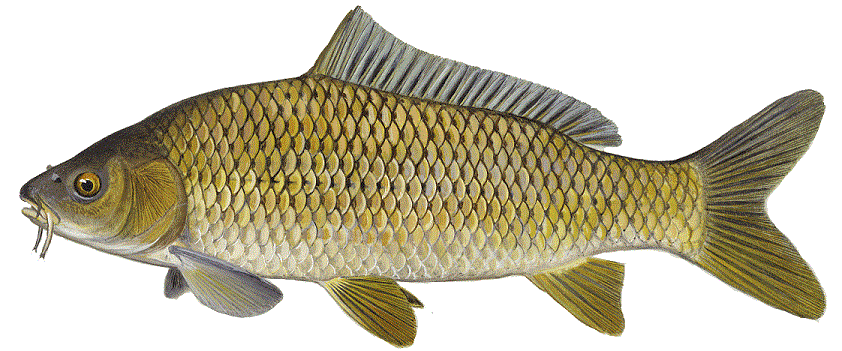
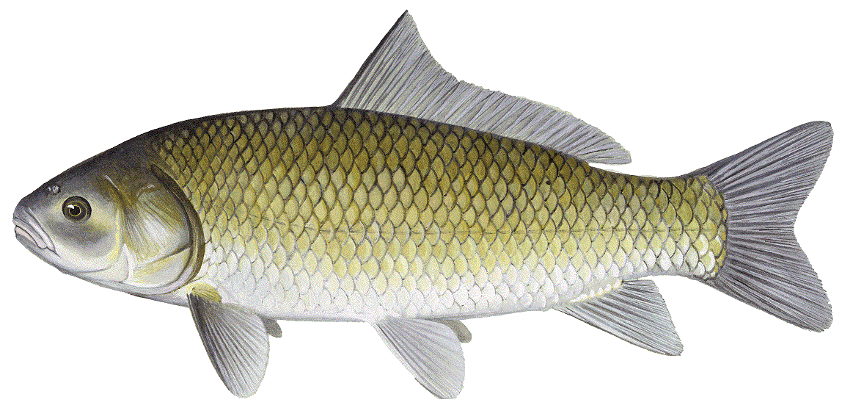
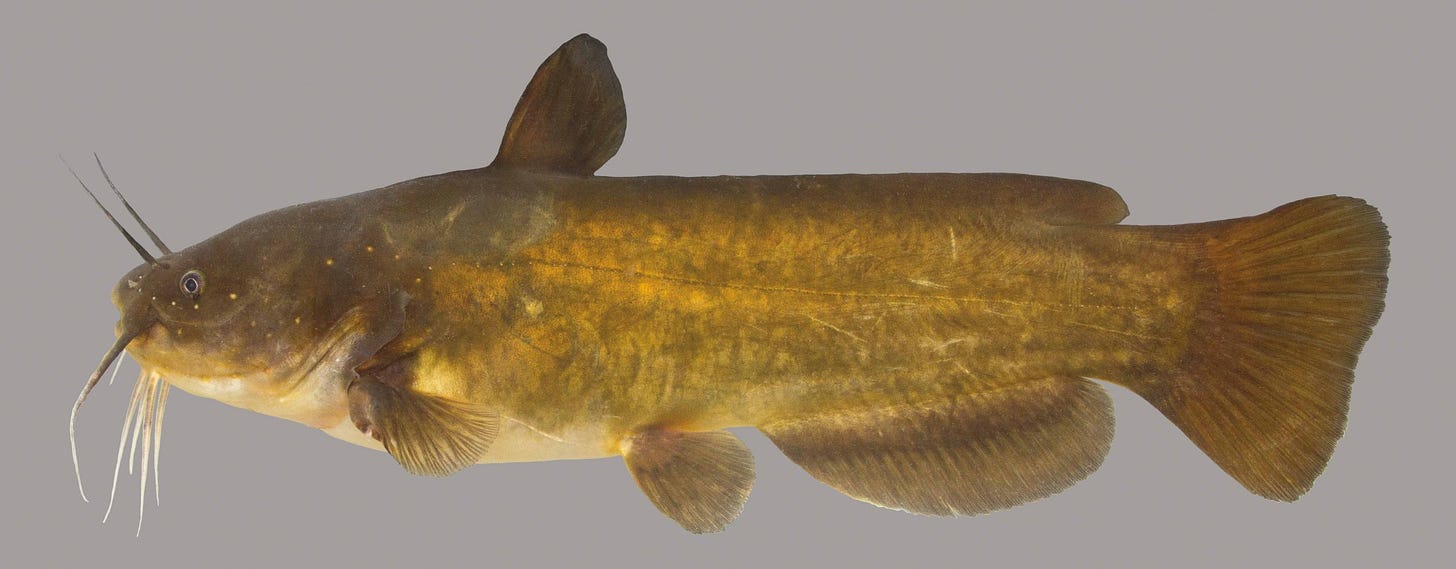
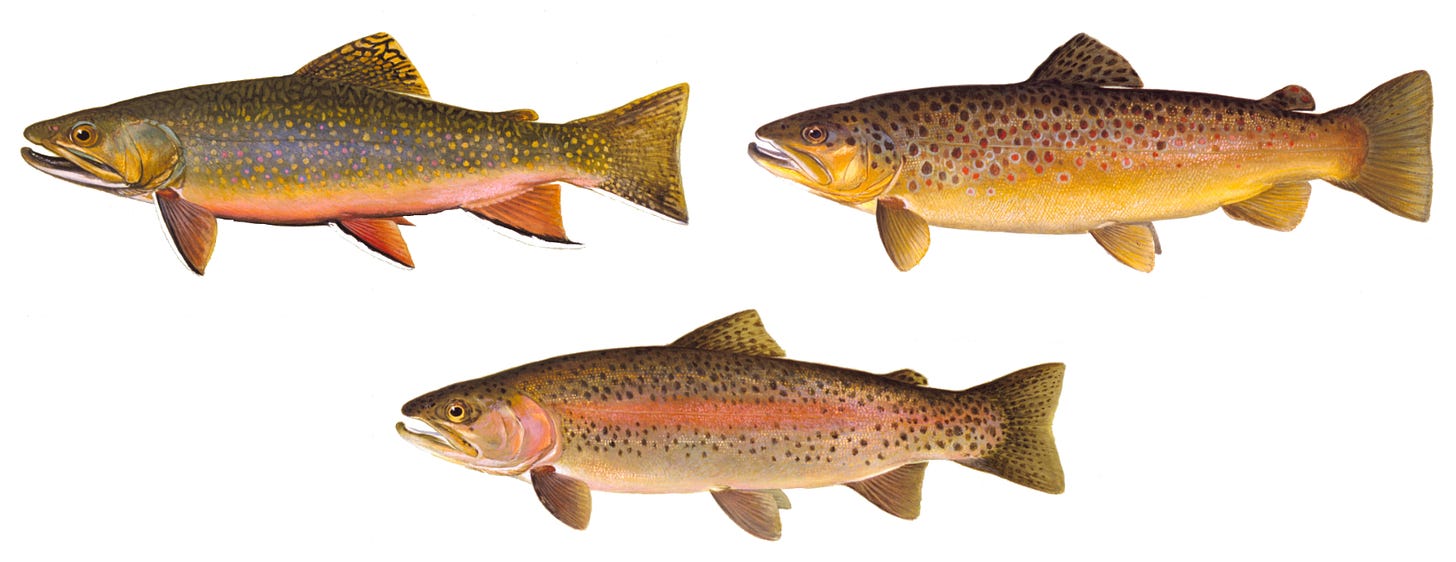
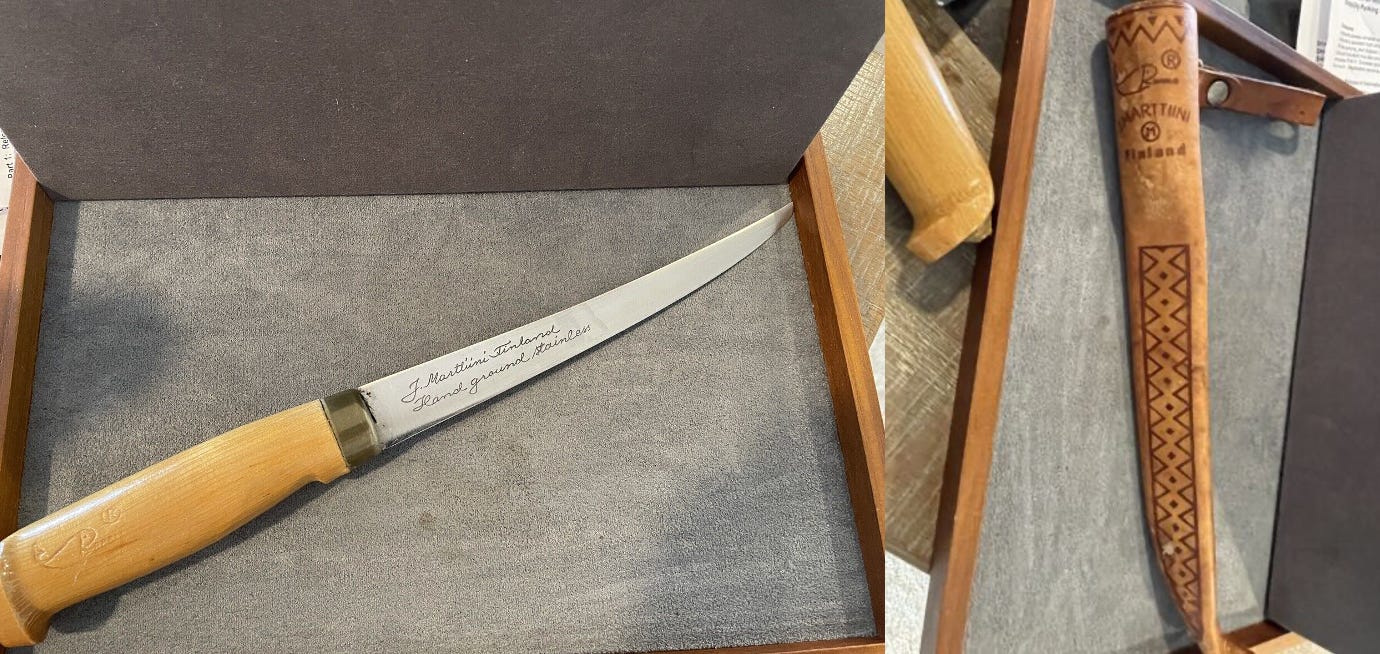
All these fish and the water and environment they need are clear reasons why it’s important to make Iowa a greater place!
Great guidebook to Iowa area fish. Growing up a quarter mile from the Cedar in Linn County we ate a fair amount of catfish from its muddy waters, and caught more than a few carp. The carp, we were told by Mom, who I suspect didn't like dealing with fish in addition to 4 kids , the farm and all that went with it, were only fit for smoking, and not hers to deal with. Luckily, a neighbor had a homeade smoker made from an old Kelvinator refrigerator, complete with the no doubt cadmium plated shelving grates from the factory.Luckily(?) , the plating probably eroded off slowly so we only got a minimal dose! He smoked a lot of fish, as he ran illegal "hoop nets" baited with the most foul rancid cheese, purchased from some factory in Muscatine, if memory serves. That was in the mid 1960s, and I remember being overjoyed that my 11 year old self was being allowed to help in the jon boats and hanging around with the older "river rats" who trucked in illegal hoop netting. Not sure why my otherwise strict Catholic mom allowed such companionship, as those guys told stories and jokes and used language I never heard my Dad use. Education comes in many forms, I guess.Sorry for the long winded trip down memory lane. What I started to ask is" how safe are fish to eat caught today in any of the major Iowa rivers?"